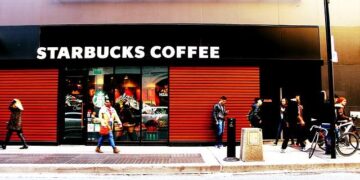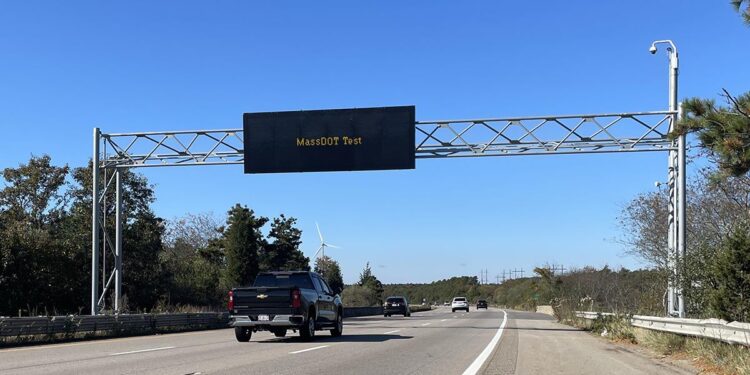Massachusetts Department of Transportation (MassDOT) and the Museum of Science have unveiled plans for an ambitious new Riverwalk project designed to create a scenic pedestrian and bicycle path linking Boston and Cambridge. The proposed Riverwalk aims to enhance connectivity along the Charles River, providing residents and visitors with improved access to both cities’ cultural and recreational offerings. As outlined in a recent announcement covered by WBZ NewsRadio 1030, the initiative promises to foster greater community engagement while promoting sustainable transportation options in the Greater Boston area.
MassDOT and Museum of Science Unveil Plans for New Riverwalk Connecting Boston and Cambridge
In a collaborative effort to enhance urban connectivity and recreational spaces, MassDOT and the Museum of Science have revealed ambitious plans for a scenic Riverwalk that will link the cities of Boston and Cambridge. This initiative aims to create a pedestrian-friendly pathway along the Charles River, offering residents and visitors a new way to experience the vibrant waterfront while promoting sustainable transportation and outdoor activities. Officials highlight that the project will not only boost local tourism but also improve accessibility between key points of interest, including parks, cultural landmarks, and transit hubs.
Key features of the proposed Riverwalk include:
- Multi-use trails for walking, biking, and jogging
- Green spaces and seating areas overlooking the river
- Improved lighting and safety measures for night use
- Interactive exhibits curated by the Museum of Science to enrich the visitor experience
Below is a preliminary timeline outlining major milestones for the project’s development:
| Phase | Timeline | Highlights |
|---|---|---|
| Planning & Community Input | Q3 2024 – Q1 2025 | Public workshops, environmental assessments |
| Design & Permitting | Q2 2025 – Q4 2025 | Architectural renderings, regulatory approvals |
| Construction | 2026 – 2027 | Trail building, landscaping, installations |
| Opening | Late 2027 | Ribbon-cutting ceremony and public access |
Project Aims to Enhance Urban Accessibility and Promote Environmental Sustainability
The proposed Riverwalk initiative aims to transform the waterfront experience between Boston and Cambridge by enhancing urban accessibility through a continuous, pedestrian-friendly pathway. This visionary project will prioritize non-motorized transportation, creating safe, inviting spaces for walkers, cyclists, and commuters alike. Key features include improved lighting, accessible ramps, and integrated green spaces designed to accommodate diverse users, from families to individuals with mobility challenges. By seamlessly connecting cultural hubs, parks, and transit points, the Riverwalk is set to redefine how residents and visitors engage with the city’s waterfront.
Beyond accessibility, the project underscores a strong commitment to environmental sustainability. The design incorporates native plant landscaping to support local biodiversity and employs eco-conscious construction materials aimed at reducing the overall carbon footprint. A closer look at the environmental impact goals highlights:
- Stormwater management systems to reduce runoff and improve water quality
- Solar-powered lighting to minimize energy consumption
- Recycling and waste reduction methods integrated into maintenance routines
| Sustainability Feature | Benefit |
|---|---|
| Native Plantings | Enhances local wildlife habitat |
| Permeable Pavements | Reduces surface runoff |
| Solar LED Lighting | Energy efficient and low maintenance |
Experts Recommend Community Engagement and Long-Term Maintenance Strategies for Successful Implementation
Community input has been identified as a vital element in securing lasting success for the proposed Riverwalk project. Experts highlight the importance of continuous dialogue with local residents, businesses, and environmental groups to ensure the pathway not only serves its intended purpose but also reflects the unique character of both Boston and Cambridge. Regular public workshops, collaborative planning sessions, and digital engagement platforms are recommended to cultivate a sense of ownership and accountability among stakeholders.
Beyond initial construction, the emphasis on long-term maintenance strategies is paramount to preserving the Riverwalk’s appeal and functionality. Experts advocate for a comprehensive plan that includes scheduled inspections, sustainable funding mechanisms, and partnerships with local organizations. The following table outlines some proposed maintenance measures and responsible parties:
| Maintenance Aspect | Recommended Action | Responsible Group |
|---|---|---|
| Vegetation Management | Seasonal pruning and invasive species removal | Local Parks Department |
| Pathway Repairs | Routine inspections and prompt resurfacing | City Infrastructure Teams |
| Public Safety | Enhanced lighting and emergency call stations | Community Watch Groups & Police |
- Ongoing community engagement ensures transparency and adaptability.
- Integrated maintenance It looks like your list was cut off at the second bullet point. Would you like me to help you complete the list based on the content so far? Here’s a suggestion:
- Ongoing community engagement ensures transparency and adaptability.
- Integrated maintenance planning supports sustainability and cost-effectiveness.
- Collaborative partnerships enhance resource sharing and local stewardship.
If you’d like, I can also help you rewrite or expand the section further or assist in formatting it for your webpage. Just let me know!
Concluding Remarks
As MassDOT and the Museum of Science move forward with plans for the proposed Riverwalk, the project promises to transform the waterfront experience between Boston and Cambridge. By creating a seamless pedestrian and bicycle connection, the Riverwalk aims to enhance accessibility, promote sustainable transportation, and foster greater community engagement along the Charles River. Officials emphasize that continued collaboration with local stakeholders and careful planning will be key to bringing this vision to fruition. The next steps will include public feedback and environmental reviews, as the city takes a significant stride toward a more connected and vibrant urban landscape.






























